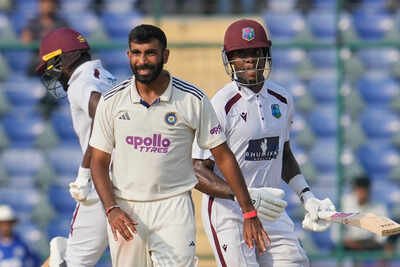Maharashtra flags 152 medical aspirants: How seat-blocking and fudged documents distort MBBS admissions

The Maharashtra State CET Cell has swung into emergency mode after discovering repeated discrepancies in the documents submitted for NEET-UG 2025 Round-3 admissions. According to a TNN report, 152 MBBS aspirants have been issued email notices for allegedly uploading incorrect or inauthentic documents during the ongoing third round of state-quota NEET-UG 2025 admissions. The Cell’s move comes a day after a TOI investigation revealed that candidates already holding seats in reputed colleges elsewhere had re-appeared in Maharashtra’s merit list. This is one of the toughest crackdowns yet on the long-denied practice of seat-blocking.
What did the investigation actually reveal ?
Candidates who had already accepted seats in other states or under the All-India Quota (AIQ) had resurfaced in Maharashtra’s Round-3 merit list, potentially locking up seats in multiple colleges, found the TNN investigation. According to the TNN report, some students approached the Aurangabad bench of the Bombay High Court, prompting the CET Cell to seek time until October 16 to complete the scrutiny process. The CET Cell’s internal audit found anomalies that stretched credibility. Several domicile certificates reportedly “did not match the format prescribed by the Maharashtra government,” while in other cases Class X certificate numbers looked incorrect. The 152 flagged students were told to re-upload original documents by noon on October 16, failing which they would be excluded from the admission process, reports TNN.
What the official notice really says
The CET Cell’s official notice, published on its NEET-UG 2025 portal, is deliberately bureaucratic but unmistakably firm. It orders a verification of all CAP-Round-3 candidates following “complaints about out-of-Maharashtra registrations.” “If any discrepancy is found in the documents, the candidate will be informed by email and/or SMS. Such candidates have to submit/upload their original and genuine documents within the stipulated time as mentioned in the mail/SMS sent to respective candidate,” states the notice. Well, what the notice does not include is significantly telling: It does not publicly name the 152 candidates, nor confirm the count cited in media reports. The Cell is clearly protecting itself procedurally, leaving the number in the realm of journalistic sourcing rather than public record. Still, the message is unmistakable: The era of blind acceptance of uploaded PDFs is over.
Seat-blocking: The quiet rot of medical admissions
Seat-blocking sounds harmless until you do the arithmetic. Each time a candidate secures a seat through the All-India Quota and simultaneously parks themselves in a state-quota list, two opportunities disappear from the ecosystem—one in each system. Multiply that by a few hundreds and you distort cut-offs, delay merit flow, and choke off seats for genuine aspirants who rely solely on their single-window ranking. To put it bluntly, seat-blocking freezes two seats when a student can occupy only one.That one line sums up the pathology. It is not simply unethical; it is structurally inflationary. It raises cut-offs artificially, misallocates scarce seats, and creates a false perception of scarcity that fuels panic counselling and opaque management quotas.The CET Cell’s verification drive, therefore, is not just about forged domicile certificates—it is about re-establishing credibility in an admissions process that has often been gamed through loopholes.
Legal oversight and the Aadhaar-link precedent
The Supreme Court of India has intervened multiple times in similar irregularities, particularly in NEET-PG admissions. The Court has pushed for Aadhaar-based seat-tracking to ensure that a candidate cannot hold multiple medical seats across states. The logic is simple: Link every seat allotment to a unique biometric identity, and duplication dies instantly.Maharashtra’s CET Cell is, in effect, operationalising the spirit of that reform. Its current move aligns with the Court’s larger push for digital traceability and accountability in medical admissions. Whether this becomes a template for other states or remains a one-off show of vigilance will depend on how the verification outcomes are handled in the next two weeks.
Inside the scrutiny : Why Round-3 is different
Round-3 of any medical counselling cycle is the system’s stress-test. High-rankers have already secured seats, vacancies emerge from withdrawals, transfers, or cancellations. That makes the remaining rounds especially sensitive to even small manipulations. According to the official notice, the CET cell has decided to verify documents of all the candidates registered for CAP-3. By doing so, the CET Cell is signalling a shift from complaint-based verification to risk-based oversight.
The human side : 152 at a crossroads
For the students under scrutiny, the October 16 deadline is a make-or-break moment. They have been instructed to:
- Check registered emails/SMS for the official notice.
- Re-upload original certificates—especially domicile, HSC/SSC, and category proofs.
- Ensure correct formats as per the Maharashtra government’s templates.
- Comply before noon, failing which their candidature will stand cancelled automatically.
Some may claim procedural lapses—wrong file uploads, system timeouts—but the Cell is unlikely to show leniency in a case that has already reached the High Court. The line between inadvertent error and deliberate fraud has blurred beyond sympathy.
The broader fallout : Transparency or turbulence?
For Maharashtra’s medical education system, this episode could become the inflection point. If Maharashtra’s verification holds its line—email-time-stamped notices, a published post-round audit, and zero quiet reversals—it will repair some of the trust the counselling portal has lost. If it blinks, the story flips to bureaucracy punishing paperwork while the loopholes stay. Here is a look at what needs to change next from a governance perspective:
- A unified national database linking AIQ and all state seats to prevent dual allotment.
- Real-time document validation through government APIs rather than manual uploads.
- Public post-round transparency reports detailing how many candidates were disqualified and why.
Maharashtra has an opportunity to lead that reform. Whether it does so depends on how the CET Cell communicates outcomes and protects the genuinely eligible.
Why this matters beyond one state
Medical admissions are India’s most contested space after civil-service exams. The cost of one fraudulent admission is not just academic—it is moral. Every falsified domicile certificate or dual-held seat tells another student that honesty doesn’t pay.By confronting this in Round-3, Maharashtra is sending a message to the rest of the country: Merit without verification is fiction. If this vigilance becomes policy rather than panic, it might finally dismantle the culture of quiet manipulation that has long haunted India’s medical education pipeline.




